Leave it to Beaver? Not when it comes to your lake
By Matt Ward
As lake managers we get any number of calls from clients about somewhat offbeat subjects. One of those call subjects is beavers and what to do about them.
The largest rodent in North America, the American beaver is a common resident of ponds and lakes across the state. Most of the time they tend to go undetected until a favorite tree gets felled or someone steps through a collapsed den access tunnel.

In less common circumstances, the client’s call might come after a beaver dam has failed and caused major damage to a lake. We have seen enough of those to say that paying attention to beavers is a worthwhile lake management activity. Here is a brief discussion of the things you should consider when it comes to beavers.
Basic Beaver Biology
Since the fur trade knocked beaver numbers back in the 80s, beavers have come roaring back and are found on all kinds of lakes and ponds across the state.
Beavers sometimes build showy lodges that you can see from a half mile away. But other times they will simply build dens into available dirt embankments with little sign other than submersed tunnel access.
Beaver dens are hollowed out areas (whether in a lodge or dirt embankment) that are above the water line with an access tunnel that is below the waterline. This design protects beavers from predation allowing them to rest and raise pups in peace.
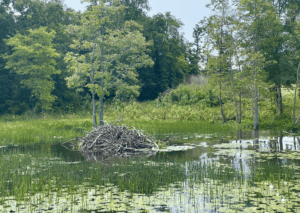
Beavers are vegetarian, focusing their forage efforts on the living tissues of trees. Most of their food comes from the living tissue from felled trees though they will occasionally consume roots and other plant material.
A sure sign of an active beaver are freshly chewed branches from which all the living tissue has been removed. The leftover wood is often incorporated into lodges or dams to improve those structures.
Beavers use dams to impound water for safety. Ponds and lakes are easy places for beavers to avoid predators and beavers have a natural propensity to plug flowing waters with earthen dams that are reinforced with felled wood.
Beavers can be active at any time of day, but often seem to be most active at night. They will fell a wide variety of sizes and species of trees. These trees are generally felled near water though we have seen cases of beavers attacking large trees hundreds of yards from the nearest water.
You might notice this post doesn’t include pictures of actual beavers. The one at the top is actually a public pic from a free photo web site, not one of our work sites. That is the norm. Beavers are generally secretive and not easy to spot. So look for their sign and don’t wait to see the critter in person. Detecting problems early is always the best policy.
Now that we have the basics on beaver biology, let’s look at the main management concerns for lake owners.
Fish Worries?
This one is easy. Beavers don’t eat fish so you don’t have worry about losing fish directly to beaver consumption. If you have lost fish recently you are probably dealing with otters. Otters might live in an old beaver lodge but no need to blame the beavers if the squatters are the problem.
Dam Damage
A stopped-up drainpipe or a sudden failure of a beaver dam on a spillway can cause incredible structural damage to a well-designed lake. This kind of damage is very expensive to address and should be avoided through careful and regular inspection of lake overflow structures.
A beaver’s need to dam flowing water is instinctual. Beavers hear flowing water and naturally want to stop it up. So they shove sticks and mud into overflow pipes and build dams across spillways. Lake managers need to inspect their overflow structures and make sure that beavers don’t plug them up.
Targeting Trees
Beavers generally chew down small trees but we have certainly seen them go after trees of up to 30” in diameter.
Often times they select our favorite trees and really damage the aesthetics of a well landscaped pond.
Many times the first sign of a beaver will be a freshly chewed tree. Check the trees that grow along the shoreline and note any fresh chew marks. Beavers typically will spend multiple nights chewing down large trees though we have seen them take down dozens in a single night.
Be sure to protect any prized trees near your pond with a wrapping of hardware cloth. Encircle the entire tree and adjust the covering from time to time to ensure that you don’t constrict the tree and that the wire doesn’t come loose. Use regular tree inspections as a simple tool to look for any new infestations of beavers.
Lodging and Tunnels
Lodging and tunnels are an excellent way to find a beaver infestation.
These tunnels create a collapse hazard for people that walk over them but also contribute to erosion in steep banks. If you don’t see a defined lodge look for piles of sticks or tunnels into earthen embankments. Note that tunnels are often concealed under overhanging branches or a dock so you might need to pay attention to access channels that appear as cleared channels through weed beds to locate an obscured den.
In short, keep an eye out for beavers to avoid the expensive headaches they can produce. If you detect them get a professional opinion about the threat they pose to your lake or pond. Beavers can be fun to watch but can also be a drain on the pocketbook. Trapping services are not inexpensive but are certainly more cost effective than repairing structural damage to a dam.
Why Choose Lochow Ranch for Pond & Lake Management
Serving Texas, Oklahoma, Arkansas and Louisiana, Lochow Ranch Pond & Lake Management proudly puts more than two decades of experience to work for you. Our team includes biologists, technicians and other professionals with deep expertise in pond and lake management services.
Check us out if you are considering building a lake, looking for pond stocking services, to buy fish for a pond, or getting professional pond management and maintenance or fishery management. Our services include lake design, pond construction, pond renovation, pond water testing, electrofishing, pond stocking, control of pond weeds, and pond liming and fertilizing. Let us help you build your dream pond that will delight your family and friends for generations to come.
Click here to get in touch to get started today.
Matt Ward is a Fishery Biologist for Lochow Ranch Pond & Lake Management. He has a Master of Science in Biochemistry from Texas A&M University and has worked in fisheries management in Texas for 15 years. He brings a passion for good science and an interdisciplinary approach to the natural sciences to help property managers steward their aquatic resources and achieve management objectives.
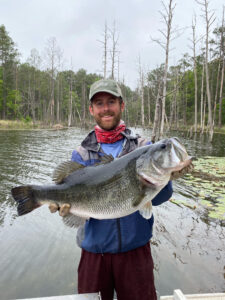
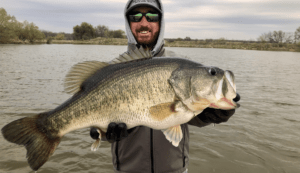
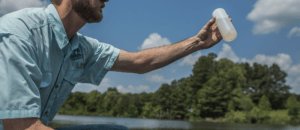
 Though most fishery managers think of water quality management as a tool to boost fish production, water quality parameters sometimes need to be manipulated to promote shifts in aquatic plant and algae communities to better support existing fisheries.
Though most fishery managers think of water quality management as a tool to boost fish production, water quality parameters sometimes need to be manipulated to promote shifts in aquatic plant and algae communities to better support existing fisheries.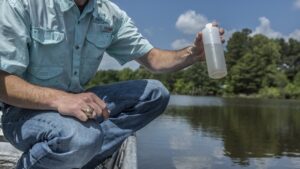 Time after time,
Time after time, 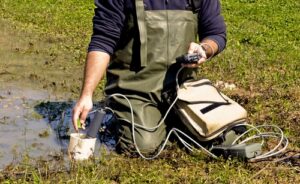
 The first step in managing nutrients is to understand where the bulk of a pond or lake’s excess nutrients are coming from. The most likely sources are applied fertilizers (both inorganic and organic), high nutrient well water, and direct animal waste.
The first step in managing nutrients is to understand where the bulk of a pond or lake’s excess nutrients are coming from. The most likely sources are applied fertilizers (both inorganic and organic), high nutrient well water, and direct animal waste.
Recent Comments